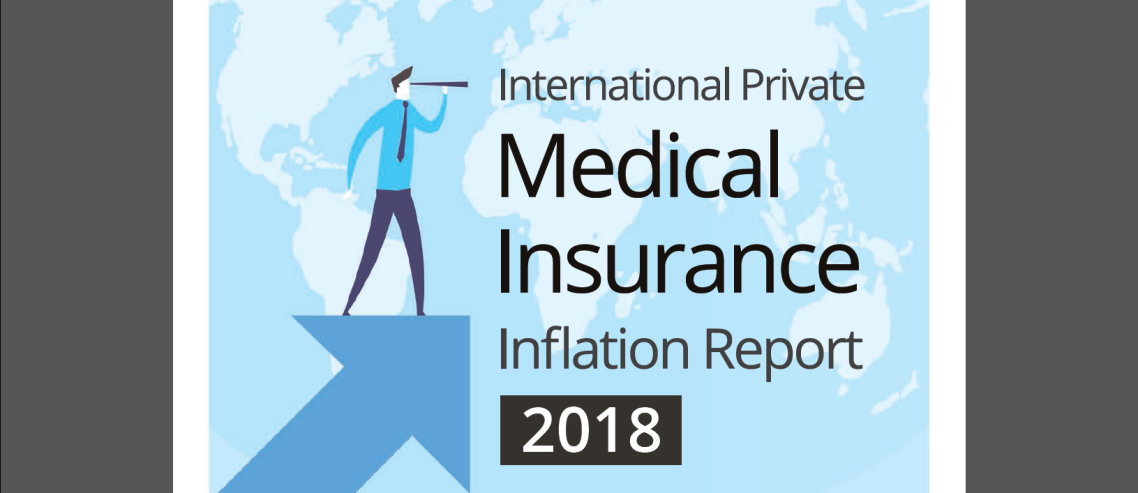Pacific Prime releases new health insurance inflation report
Healthcare is highly affordable for a majority of people in Singapore. The Lion City’s superb public healthcare system, and the excellent management of it by the Ministry of Health and local government, allows Singaporean natives and those with PR status to receive high-quality, subsidized healthcare. Costs are then covered by funds from working people’s Medisave accounts. This system works so well that Singapore is often pointed to as an example of what a great healthcare system looks like by people around the world!
Even so, there are those in Singapore that have opted to purchase private health insurance. Some of these folks are people that want to have access to the relatively expensive healthcare that can be found in the city-state’s private hospitals. Others, such as new expatriates, do not have access to public hospitals whatsoever, and are practically forced to obtain private medical insurance to address the costs of their healthcare.
People should recognize that medical costs in private hospitals and clinics in Singapore can be quite high when compared to those seen in other countries in Southeast Asia. It then becomes important for those with private health insurance policies to pay attention to how much their premiums go up each year. Fortunately for them, Pacific Prime produces an annual report on the inflation seen in international health insurance around the world!
We are happy to announce the release of the 2018 edition of our International Private Medical Insurance Inflation Report! Read on below to see what’s inside, and find out some facts about Singapore’s international health insurance inflation over the past year.
What’s in the report
Pacific Prime has been producing a report on inflation in the international private medical insurance (IPMI) sector for a number of years now. The report has served as a valuable resource for insurance policyholders and insurance industry professionals ever since it was created. This is because it provides insights into IPMI inflation that can then be applied to greater insurance industry at large, as well as global economics. Many people are simply curious to see how particular regions, nations, and insurers are performing, too.
The report considers a number of different factors in reporting its findings. First, 10 different countries are used to analyze IPMI inflation, and different groupings of the countries covered lead to analysis of IPMI in different regions. The same eight plans from seven different insurers are used across the board. The insurance companies used include:
- William Russell
- IntegraGlobal
- Cigna Global
- Bupa Global
- AXA PPP Healthcare
- Allianz Partners
- Aetna International
Inflation data for each insurer in each country is provided for 2017, but the report goes much further than that. The data presented in the IPMI Inflation Report actually dates back to 2009, so not only can you see recent inflation performance, but also how well each territory and insurer has done over a long period of time.
Data isn’t all you will find, either. There is also a wealth of information presented on causes, trends, and expectations. That means that you will find the reasons why inflation has increased by as much as it has, similarities between inflation rates seen in different locations, and forward looking statements about expected performance throughout 2018.
International health insurance inflation in Singapore
The Asia region covered by the report is essentially separated into ‘high cost’ and ‘low cost’ countries. The low cost countries covered include Indonesia, the Philippines, and Thailand, while the high cost countries are China, Hong Kong, and – you guessed it – Singapore. The overall level of development in the city-state has produced a very high quality of medical care. However, the general level of affluence here and an aging population have ensured that the existing healthcare system has truly been put through its paces to adequately serve the local population. Hospitals in Singapore are in high demand, so medical costs tend to rise steadily, which then leads to health insurance inflation.
As you can see from the graph above, the 2017 IPMI inflation rate in Singapore was 6%. While this may seem like a somewhat substantial increase on insurance premiums, it is actually quite low when compared to Singapore’s inflation in other years. In fact, a 6% inflation rate is the lowest rate that Singapore has seen since 2009! The 2016 rate was 11.2%, which means that the rate has fallen 5.2 percentage points in a single year.
As mentioned previously, the report also provides some reasoning behind why we have seen such performance in Singapore in 2017. A combination of reasons is cited, but one factor mentioned is that the Singapore government is taking steps to control costs of insurance and keep premiums more sustainable.
For more on this, as well as other reasons Singapore’s IPMI inflation rate has fallen, check out the report.
Global IPMI inflation
It’s understandable that people in Singapore would want to know more about health insurance inflation in their home country. There is still much to be said about the state of IPMI around the globe, though. First and foremost, it should be noted that the global IPMI inflation rate in 2017 was 7%. (Suddenly Singapore’s 6% rate is looking even better.) Much like Singapore, this 2017 rate was the lowest such rate that the world has seen since the report began gathering data in 2009.
It is always good news to see a low inflation rate in just about any arena, but the fact remains that there was inflation in 2017, and premiums will have gone up for a number of people. However, if you were a Cigna Global member in the past year, our report will show you that there is a good chance that your premiums will have actually gone down, as the insurer saw price decreases in many different countries.
Nevertheless, premiums will have gone up for most people with IPMI plans last year, so it’s important to recognize just why inflation is caused on global scale. There are a number of different reasons for inflation, the most prominent of which are mentioned in the report. Want to know what they are? Download the report.
Get the report today
The International Private Health Insurance Inflation Report 2018 is ready to be downloaded now. Just follow this link to get your own copy today. There’s plenty more information to find than what has been discussed here, so be sure to download today!
Besides that, Pacific Prime Singapore is always available to provide you with a free health insurance plan comparison and price quotation. Simply contact us today via our website.
- The Pros and Cons of the Singapore Healthcare System - February 27, 2023
- Social fitness: Why you should consider embracing it - February 6, 2023
- Singapore launches new M-SEP scheme allowing firms to hire more S-pass and work permit holders - January 26, 2023






Comments
Comments for this post are closed.
We'll notify you
when our team replies!